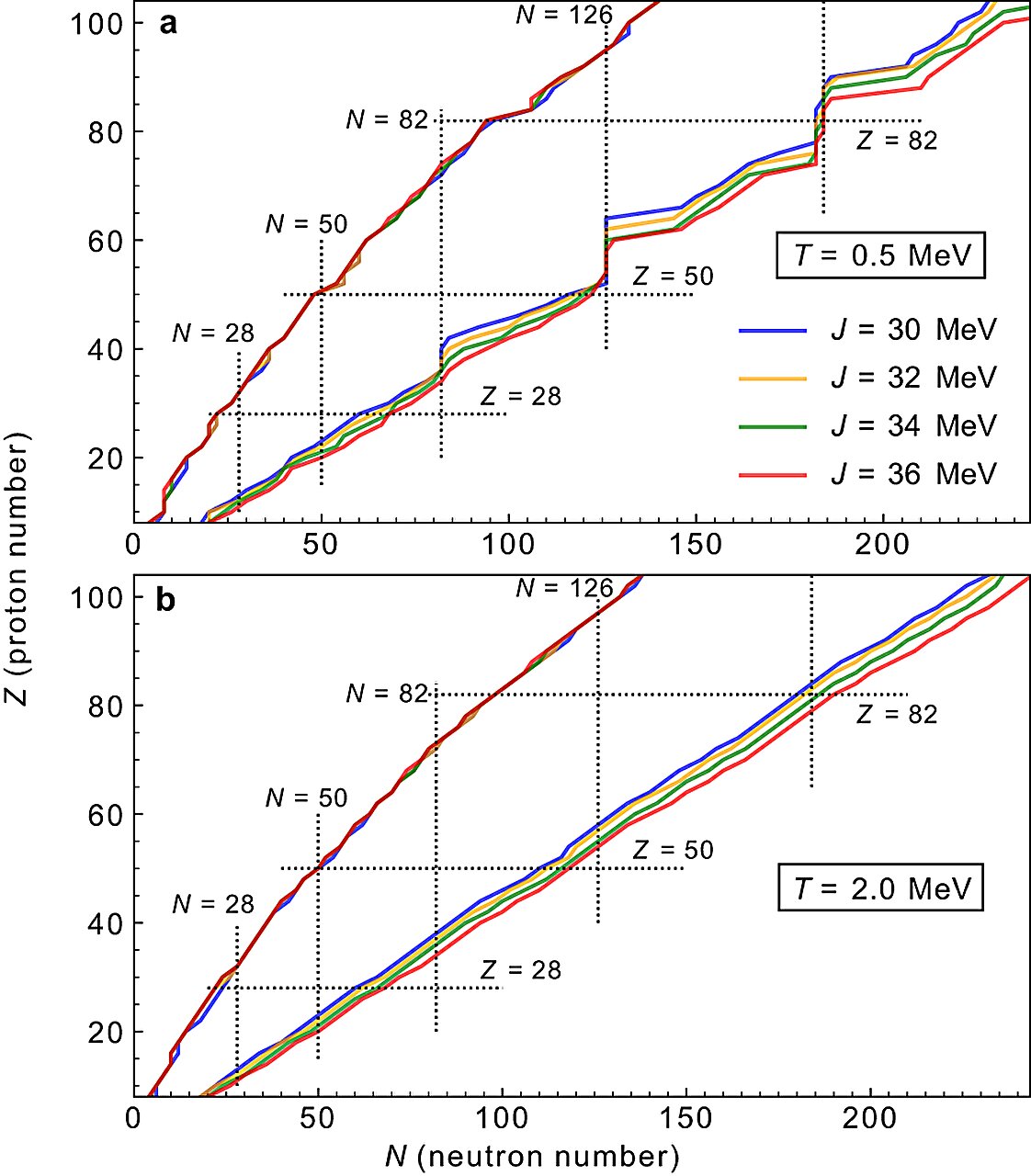New research is challenging the scientific status quo on the limits of the nuclear chart in hot stellar environments where temperatures reach billions of degrees Celsius.
The nuclear chart is a way to map out different kinds of atomic nuclei based on their number of protons and neutrons, and the “drip lines” can be viewed as the boundaries or edges of this map. Researchers from the University of Surrey and the University of Zagreb have found that these drip lines, which define the maximum number of protons and neutrons within a nucleus, change dynamically with temperature.
The findings challenge the view that drip lines and the number of bound nuclei are not sensitive to the temperature.
Dr. Esra Yuksel, co-author of the study from the University of Surrey, argues that the physics community must understand the limits of the nuclear chart. She said, “Considering that nuclei participating in most of the processes in the universe are hot, understanding how many protons and neutrons bind together in extreme environments is critical.
“We aim to determine which nuclei can contribute to nuclear reactions and processes, especially in extremely hot stellar environments such as supernovae and neutron star mergers. These extremely hot environments are where most of the chemical elements heavier than iron are produced. Until our study, we didn’t know much about these ‘drip lines’ (limits) at temperatures measured in billions of degrees Celsius.”
The study, published in Nature Communications, found that increasing temperatures significantly alter the limits of the nuclear chart. The discovery shows that more nuclei exist within the drip lines for hot nuclei than for cold nuclei.
The researchers from Surrey and Zagreb used theoretical calculations to predict nuclear properties and drip lines at temperatures up to 20 billion degrees Celsius. They found that at temperatures up to 10 billion degrees Celsius, the drip lines and the number of bound nuclei have already started to change. At higher temperatures, shell effects disappear, and these changes become more visible.
Dr. Yuksel says, “Our work demonstrates that the nuclear drip lines should be viewed as evolving limits that dynamically change with temperature. Before this research, nuclear drip lines at finite temperatures were unknown, and knowledge about nuclei in hot stellar environments was limited since most theoretical and experimental studies are restricted to zero temperatures only.
“These new insights help us to understand how temperature changes the stability and structure of atomic nuclei. This knowledge is important not only for nuclear physics but also for understanding the modeling of extreme astrophysical events, such as neutron star mergers and core-collapse supernovae.”
More information:
Ante Ravlić et al, Expanding the limits of nuclear stability at finite temperature, Nature Communications (2023). DOI: 10.1038/s41467-023-40613-2
Citation:
The limits of nuclear stability change in stellar environments where temperatures reach billions of degrees Celsius (2023, September 18)
retrieved 18 September 2023
from https://phys.org/news/2023-09-limits-nuclear-stability-stellar-environments.html
This document is subject to copyright. Apart from any fair dealing for the purpose of private study or research, no
part may be reproduced without the written permission. The content is provided for information purposes only.
Denial of responsibility! My Droll is an automatic aggregator of Global media. In each content, the hyperlink to the primary source is specified. All trademarks belong to their rightful owners, and all materials to their authors. For any complaint, please reach us at – [email protected]. We will take necessary action within 24 hours.


